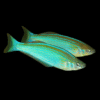To provide the best experiences, we use technologies like cookies to store and/or access device information. Consenting to these technologies will allow us to process data such as browsing behaviour or unique IDs on this site. Not consenting or withdrawing consent, may adversely affect certain features and functions.
The technical storage or access is strictly necessary for the legitimate purpose of enabling the use of a specific service explicitly requested by the subscriber or user, or for the sole purpose of carrying out the transmission of a communication over an electronic communications network.
The technical storage or access is necessary for the legitimate purpose of storing preferences that are not requested by the subscriber or user.
The technical storage or access that is used exclusively for statistical purposes.
The technical storage or access that is used exclusively for anonymous statistical purposes. Without a subpoena, voluntary compliance on the part of your Internet Service Provider, or additional records from a third party, information stored or retrieved for this purpose alone cannot usually be used to identify you.
The technical storage or access is required to create user profiles to send advertising, or to track the user on a website or across several websites for similar marketing purposes.
Red Devil Vampire Crab - Geosesarma Hagen - Decapod Crustacean 1 × £8.71



 Red Devil Vampire Crab - Geosesarma Hagen - Decapod Crustacean
Red Devil Vampire Crab - Geosesarma Hagen - Decapod Crustacean 










Emily Carter (verified owner) –
I recently purchased a pair of Poecilia Wingei «Emerald Green» (True Endler) and I couldn’t be happier! After a week in my 20-gallon tank, they have already settled in beautifully. Their vibrant green colors are simply stunning, and they add a lively touch to the community setup. I love watching them zip around, and their friendly nature makes them perfect companions for my other fish.
One of the best things about these Endler guppies is that they are also quite hardy, which is great for my slightly varied water conditions. I had previously tried standard guppies, but I found them to be less vibrant and more prone to stress. In contrast, these guys not only thrive but seem genuinely happy!
I’ve noticed they enjoy flake food and are not picky eaters, which makes feeding time a breeze. They are perfect for both experienced aquarists and newcomers looking to add some charm to their tanks. I highly recommend them to anyone who wants to enhance their aquarium with beautiful and engaging fish. Just be sure to maintain a clean environment and provide plenty of plants for them to explore!